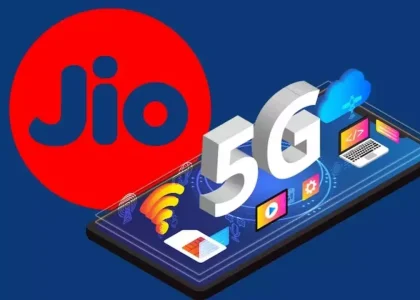Introduction
Dunzo, one of India’s most prominent hyperlocal logistics startups, began with a simple premise: Get anything delivered, anytime, within your city. Whether it’s groceries, medicines, documents, or food, Dunzo’s promise hinges on speed, reliability, and convenience.
Behind this seamless customer promise is a highly dynamic, AI-powered routing engine—especially relevant in Dunzo’s innovation known as Multi-Pickup Routing Intelligence. This operational capability allows a single delivery partner to execute multiple pickups (from different stores or locations) and drop them to multiple consumers in a highly optimized, time-sensitive route.
This case study unpacks how Dunzo designed, refined, and scaled its multi-pickup intelligence system, enabling:
- Route clustering for hyperlocal dispatch
- Fuel and labor optimization
- Better partner utilization
- Lower delivery costs per order
- Superior experience for end-users
The Hyperlocal Delivery Model in India
A. What is Hyperlocal?
Hyperlocal delivery refers to real-time, intra-city, on-demand logistics, primarily within a 5–8 km radius. For players like Dunzo, the complexity comes from:
- High variability in order types (documents vs. groceries vs. restaurant meals)
- Dense city traffic
- Narrow delivery time windows
- Last-minute customer instructions
B. Challenges Faced in Traditional Single-Order Routing
| Challenge | Impact |
| High cost per delivery | Margins eroded in <₹100 order baskets |
| Inefficient partner time usage | Idle or underutilized riders |
| Poor customer experience | Delays due to suboptimal sequencing |
| High fuel usage | Low sustainability and profitability |
Dunzo realized early that routing intelligence would be the difference between scaling and stalling.
What is Multi-Pickup Routing?
Multi-pickup routing is the practice of:
- Assigning a single rider multiple pickup points (e.g., Kirana + Pharmacy + Document)
- Sequencing the pickups to optimize total time, delivery windows, customer proximity
- Matching pickup locations with real-time delivery requests
- Reducing total rider movement without affecting on-time delivery (OTD)
Instead of 1 rider per order, Dunzo moves to 1 rider for 3–4 intelligently grouped orders.
Dunzo’s Evolution of Multi-Pickup Routing Intelligence
A. Phase 1: Static Clustering (2017–2019)
- Riders manually grouped pickups in localities like Indiranagar or BTM Layout
- Static rules: No more than 3 pickups, all within 2 km
- No real-time optimization or re-routing
Limitation:
Manual, inconsistent, and not scalable
B. Phase 2: AI-Led Real-Time Routing (2020 Onward)
- Investment in Graph-based Route Optimization Engine (GROE)
- Inputs considered:
- Rider location
- Delivery urgency (ETA promise)
- Traffic data (Google Maps + TomTom)
- Merchant prep time
- Customer distance
- Product category (perishable, hot, or time-sensitive)
Output:
Dynamic assignment of 3–5 pickups to one rider with a prioritized route map
Architecture of Dunzo’s Routing Engine
A. Input Data Layer
- Order metadata: Location, SKU size, category
- Rider availability: Skill score, current capacity
- Merchant readiness time: Prep time, SLA adherence
- Traffic & congestion data: Live feeds
- Historical performance data: Past delivery times for similar routes
B. Algorithmic Engine
| Component | Function |
| Clustering Engine | Groups orders with overlapping pickup zones |
| Sequencer | Reorders pickups + drops for least time deviation |
| ETA Estimator | Predicts time for each leg using ML models |
| Constraint Solver | Ensures no perishable goods are delayed |
| Partner Allocation Model | Scores riders based on skill, history, traffic tolerance |
Operational Workflow: Step-by-Step Example
Let’s take a real scenario in Koramangala, Bengaluru:
- Orders:
- A grocery order from More Supermarket
- A medicine pickup from Apollo Pharmacy
- A meal from Wow! Momo
- Customer drop points: All within 2.5 km radius
Steps:
- Order intake system flags potential cluster
- Routing engine scores combinations based on prep time and delivery windows
- Optimal cluster with route assigned to best-fit rider
- Rider gets:
- Google Map-linked navigation
- Live sequence alerts (e.g., “Pick from Apollo first, then Wow! Momo”)
- Rider executes drop-off with real-time tracking enabled
Key Benefits & Metrics Improved
| KPI | Before (Single Pickup Model) | After (Multi-Pickup Routing) |
| Avg. cost per delivery | ₹66 | ₹42 |
| Partner idle time | 38% | 12% |
| Orders per hour per rider | 1.8 | 3.4 |
| On-time delivery rate | 83% | 91% |
| Fuel cost per 100 orders | ₹1,600 | ₹900 |
| NPS (Net Promoter Score) | 45 | 68 |
Technologies & Platforms Integrated
| Platform | Role |
| Google Maps API | Route distance, traffic layer |
| OpenStreetMaps + GraphHopper | For fallback mapping |
| AWS Sagemaker | ML model training for ETA predictions |
| Firebase | Rider app push notifications |
| PostgreSQL + Redis | Order & route caching for fast access |
| Segment + Mixpanel | Partner app behavior analytics |
Partner App Experience
Riders use the Dunzo Partner App, which shows:
- Number of pickups with route sequence
- Dynamic ETA for each stop
- Alerts for perishable goods
- Route updates if new orders are added mid-trip
- Earnings visibility for batch jobs
App automatically logs:
- Start and end time per order
- Time spent at merchant
- Time per kilometer to feed into incentive engine
Challenges and Solutions
| Challenge | Solution |
| Rider fatigue with multiple stops | Incentive boosts for >3 pickups, gamified leaderboard |
| Merchant prep-time mismatch | Real-time merchant ETA API + buffer sequencing |
| Customer perception of delays | SMS + in-app updates: “Your Dunzo is completing another delivery nearby” |
| Failure in batch drops (e.g., item missing) | Escalation logic in app, flagged orders removed from batching temporarily |
| Dense traffic re-routing | Dynamic route reshuffling every 5 minutes |
Dunzo Merchant Coordination SOP
To support multi-pickups:
- Merchants have 5-minute dispatch target
- Dunzo’s partner engagement team trains top 500 merchants on:
- Labeling batched orders
- QR scanning before handover
- Packaging for bundling with other items
Also:
- Performance-based priority in batch sequencing
- Penalization for >10% prep time deviations
Strategic Impact on Dunzo’s Unit Economics
| Cost Component | Impact of Multi-Pickup |
| Fuel costs | -35% |
| Partner payout per order | Reduced via batch incentives |
| Failed deliveries | -21% |
| Per order operational cost | ₹12–₹18 lower |
| Customer acquisition cost (CAC) | Better retention via faster delivery NPS |
Comparison with Competitors
| Feature | Dunzo | Swiggy Genie | Blinkit | Porter |
| Multi-pickup routing | ✅ Full rollout | ✅ Partial | ❌ | ✅ (trucks only) |
| Real-time routing AI | Advanced | Rule-based | NA | Basic |
| Rider incentives for batch drops | ✅ | ❌ | ❌ | ❌ |
| Order density-based clustering | ✅ | ❌ | ❌ | ✅ |
| API merchant integration | Yes | Partial | NA | No |
Future Roadmap for Routing Intelligence
Dunzo is working on:
- AI-Optimized Pickup Radius: Varies radius by order density and rider saturation
- Autonomous Vehicle Batch Testing: For campuses and gated societies
- Dynamic Pricing Based on Route Complexity: Users may pay lower rates if their order fits a batch cluster
- EV-Specific Routing: Charging stations mapped into route logic
- Gamification for Riders: Rewards for achieving batch delivery streaks
Lessons for Retail and Q-Commerce Players
- Invest early in routing data infrastructure
- Use ML to balance delivery SLAs vs. batch economics
- Partner training is critical—a smart route is only as good as the execution
- Real-time re-optimization is more important than pre-planned routing
- Clustering logic should include product type, size, and perishability
Conclusion
Dunzo’s multi-pickup routing intelligence is a milestone in hyperlocal delivery innovation. By clustering pickups, reordering stops, and adapting dynamically to traffic, prep time, and rider skill, Dunzo:
- Reduced costs
- Increased delivery velocity
- Improved partner efficiency
- Enhanced customer satisfaction
As on-demand delivery becomes the default across India’s top cities, smart routing at the kilometer level will define winners. Dunzo’s operational intelligence provides a blueprint for how retail, Q-commerce, and hyperlocal startups can compete on both cost and convenience.
Sources
- Dunzo Engineering Blog (engineering.dunzo.com)
- ET Tech & YourStory Interviews with Kabeer Biswas (CEO)
- Rider App screenshots and user documentation
- LogisticsTech Outlook India (2022–2024)
- Redseer Hyperlocal Logistics Report
- Interviews with former Dunzo ops team leads






